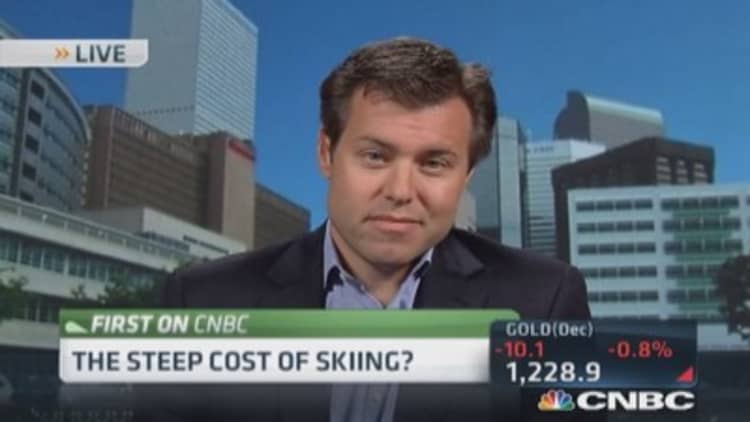
Ski bums rejoice!
With much of the U.S. experiencing a cold front and record amounts of snow falling in parts of the Northeast, resorts across the U.S. are getting a head start on ski season.
"We have had a tremendous amount of natural snow here in Colorado and have for the past couple of weeks and we're looking at more snow for Tahoe, Utah and here all for the next week," Rob Katz, CEO of Vail Resorts, told CNBC's "Squawk on the Street" recently.
The Broomfield, Colorado-based operator has opened a number of its resorts already and Katz said the conditions are fantastic. As snow begins to blanket parts of the country—in November, no less—he's expecting one of the best openings for the company in years.
Read MoreSnowmageddon: Buffalo buried under feet of snow
In an industry where weather is by far the single biggest factor that divides success from failure, analysts and industry insiders are upbeat about the 2014–2015 season.
"The state of the ski industry is very strong right now," said Joel Simkins, leisure analyst at Credit Suisse. He notes supply hasn't grown in the North American market in 30 years, creating an environment in which operators have the ability to charge what they want in a sector that already caters to higher-end tastes.
"As [Wall Street] continues to climb, we're looking for big spending from higher-income guests across the board," said Katz. "We see that as huge opportunity heading into this season."
Hey big spender
Meanwhile, spending on ski-related equipment and apparel is at a record high. In the U.S. consumers shelled out $3.6 billion last winter, according to the SnowSports Industries America. The not-for-profit trade association projects spending this season will once again come close, at $3.5 billion.
Michael Berry, president of the National Ski Areas Association, said the biggest game-changer in the industry has been resorts' more aggressive marketing of season passes.
"Season pass sales over the last decade have increased significantly," said Berry, adding that this kind of product helps even out operators' cash flow, making them less seasonally dependent.
Read MoreSkiing in Park City this winter? Don't make reservations yet
For its part, Vail Resorts said sales growth of its EPIC pass has jumped double-digit percentages this year. At Intrawest Resorts, volumes are up 14 percent—and 20 percent in dollar terms— heading into the season.

Despite the positive outlook, however, participation rates in the sport have flattened in recent years. An estimated 56.5 million visitors hit the slopes last season, just under the ten-year average, according to the National Ski Area Association (NSAA). A culprit: lack of adequate precipitation in the Pacific West. Particularly in drought-hit California, some fear conditions could pressure numbers once again this year.
However, "these things tend to ebb and flow so we're not too worked up over short-term trends," said Simkins.
When it comes to skiing participation, those donning skiis are not the usual suspects, According to the NSAA, active, retired baby-boomers are dominating the slopes. "The demographic that skis with great frequency is 65 or older, because they have the time and money," said Berry.
This could pose a challenge for the industry as those baby-boomers age, spurring many in the industry to ramp up efforts to focused on new skiers, particularly children and teens.
Yet despite the challenges, he notes the ski industry remains very profitable.
"While we are a capital intensive industry, we are also very profitable," said Berry. "That's changed dramatically from 15 or 20 years ago."
Correction: An earlier version of this story misidentified the name of SnowSports Industries America.


